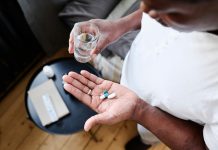
In a new study, researchers found that couples conceive quicker in late fall and early winter, especially in southern states.
It is the first-of-its-kind that accounts for when couples are most likely to start trying to conceive.
The research was conducted by a team at the Boston University School of Public Health.
In the US, birthdays peak in early September, but in Northern states—and Scandinavia—the peak comes earlier, in the summer or even spring.
Although many factors likely go into the popularity of birthday months (a spike in November is popularly attributed to Valentine’s Day), the study shows seasons themselves may play a role in how easy it is to conceive.
The study used data on 14,331 pregnancy-planning women who had been trying to conceive for no more than six months, including 5,827 U.S. and Canadian participants and 8,504 Danish participants.
The team found although couples in North America and Denmark are most likely to start trying in September, it’s in late November and early December that they have the best chances of conceiving, especially at lower latitudes.
After accounting for seasonal patterns in when couples start trying to conceive, the team found a decline in fecundability in the late spring and a peak in the late fall.
(“Fecundability” refers to the odds of conceiving within one menstrual cycle.)
The North Americans were more likely than Danes to begin trying to conceive in the fall (possibly in the hopes of giving birth when work is less busy in the summer, which may be more important in the U.S. than Scandinavia).
But, after taking those patterns into account, season affected fecundability for North Americans by 16%, while Danes got only an 8% seasonal boost in the fall and dip in the spring.
In southern U.S. states, the seasonal variation was even stronger, at 45%, with a peak in quick conceptions in late November.
Meanwhile, the link between season and fecundability turned out to be about the same in Denmark and in northern states and Canada.
The team says there are several hypotheses on seasonally-varying factors and how they affect fertility, including meteorological variables such as temperature and humidity, vitamin D exposure, and environmental exposures such as air pollution.
The lead author of the study is Dr. Amelia Wesselink, a postdoctoral associate in epidemiology at BUSPH.
The study is published in the journal Human Reproduction.
Copyright © 2020 Knowridge Science Report. All rights reserved.



